15 Major Ports in Spain
The Kingdom of Spain is a European country located on the Iberian Peninsula. To the South West of mainland Europe, it is famed for tourism, fishing, sports, and several other industries.
Spain is covered by water on 3 sides, making it ideal for establishing ports and other shipping hubs. Well-connected facilities are linked to several international airports of the region.
Shipping is a vital industry in Spain. However, fishing is prominent along with most coastal villages and cities. In fact, Pescanova, which is one of the largest fish exporters in the world, is based out of Spain. The main exports from the country include foodstuff, fish, minerals, minor oil produce, chemicals etc.
These ports and shipyards are considered to be facilities of national interest. They are independently operated under different port authorities but are centrally managed by the Ports of the State, which is a government-owned company responsible for the execution of policies. It is known regionally as Puertos del Estado.
From the past several centuries, Spain’s maritime history has included commercial trading, naval inquisitions to distant lands, and coastal ferries.
The Spanish Armada was one of the most feared naval forces in history, and numerous forts that were once based for the navy can still be found dotting the coastline today.
Given its vast maritime importance, Spanish ports have played a major role in the development and growth of the country.
In this article, we look at the top 15 ports of Spain. The Locode, region or province of Spain and the gross tonnage of cargo (in 2019) of the ports are also mentioned. These 15 ports are the major shipping hubs spread throughout the country, including the Spanish mainland, Balearic Islands, and the Canary Islands.
Note, the Locode begins with the prefix ES- (for Espagne) indicating a port located within the territorial waters of Spain.
1. Port of Algeciras Bay (ESALG)
Andalusia; 109.4 million tons
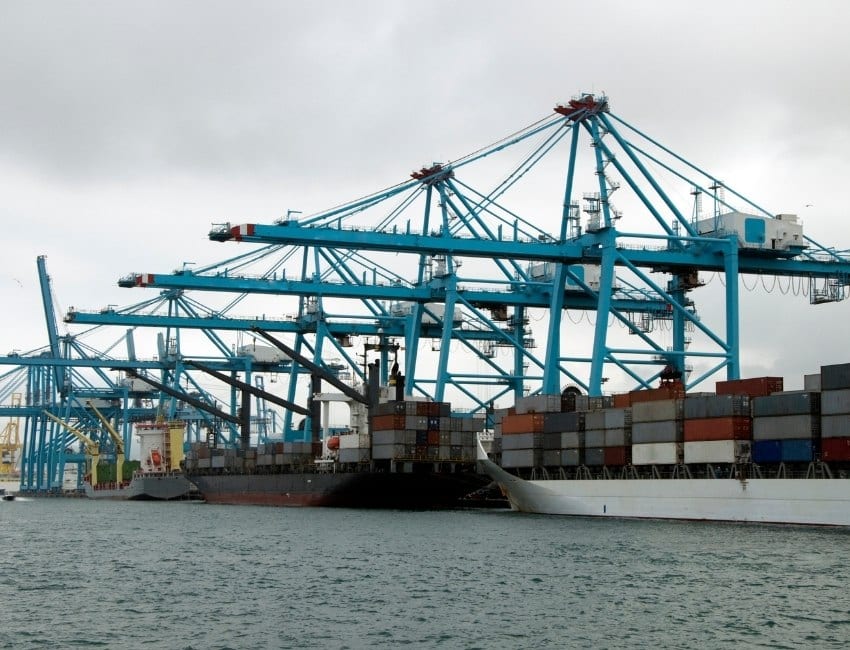
Algeciras Bay is located in the Cadiz province of Andalusia, and is the largest port in Spain in terms of gross tonnage passing through annually.
It is managed by the Port Authority of Algeciras Bay and neighbours the Port of Tarifa.
Due to its proximity to the Bay of Gibraltar, it experiences a large portion of the traffic in Spain. It is ranked 33rd in the global list of largest ports and is the largest along the Mediterranean coast.
The facilities within the port include container handling terminals, tankers and bunker fuel services, passenger and cruise ship wharfs, ro-ro docks, and wholly dedicated wharves for the local fishing industry.
The port is one of the newer ones in Spain but has established itself as a major shipping hub. It connects to nearly 200 ports on a weekly basis and handles imports, exports, and transhipment. The port is visited by nearly 30,000 ships annually.
The main terminals that operate within the port include the APM Algeciras Terminal and the Total Terminal International Algeciras (TTI ALG). They house state of the art facilities, with several ships to shore cranes.
They can accommodate super Panamax, post-Panamax, as well as several mega-ships.
Over 100 mega-ships berth at the Algeciras Port annually. These vessels are capable of transporting more than 18,000 TEUs per voyage.
2. Port of Valencia (ESVLC)
Communidad de Valencia; 81.1 million tons
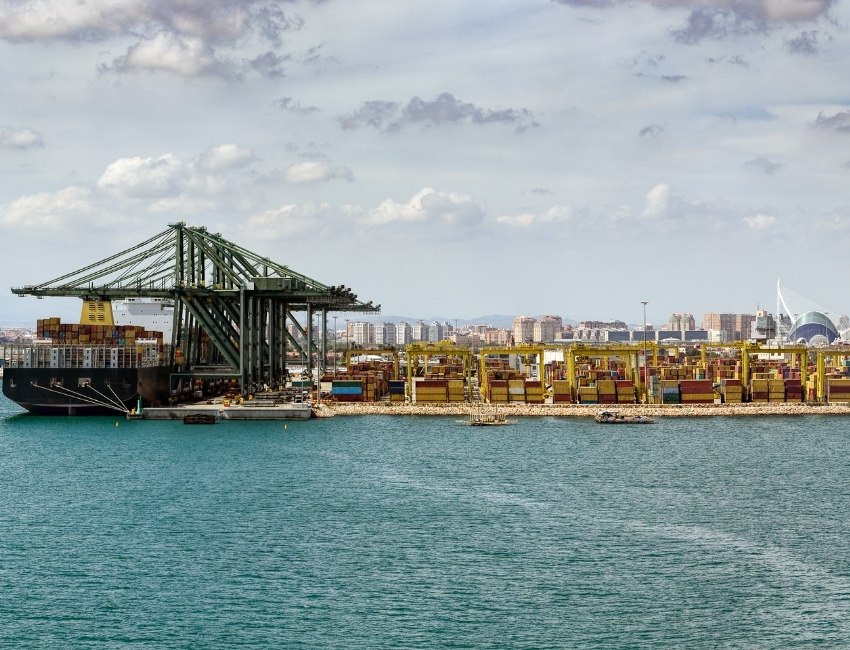
This port is the 5th busiest port in Europe and is an important seaport of the region. It primarily deals with container ships and other general cargo vessels.
Managed by the Valencia Port Authority (VPA), it is the largest container port in Spain (5.4 million TEU as of 2019) and the second largest in the Mediterranean region (behind the Port of Piraeus, Greece). It is ranked 2nd, behind the Algeciras Port in terms of gross tonnage.
The port is located in a very important region of Spain, that generates over 50 % of the nation’s GDP. It provides employment to over 75,000 people and services up to 10,000 ships a year.
The port operates a 12 km long quay with large container yards spanning nearly 300 acres. In addition to cargo shipment, the port also deals with passenger ships and has observed a steady increase in the number of passengers inbound.
Located on the Eastern coast of Spain, the port controls 2 satellite ports located on the Mediterranean Sea- the Port of Sagunto (10% traffic) and the Port of Gandia (1.5% traffic).
Sagunto primarily deals with LNG, iron, steel, fertilizers, construction materials, and timber shipments. It is also close to a regasification plant. Gandia is concerned with the shipment of forestry goods such as timber, reel, pulp, paper, and furniture.
3. Port of Barcelona (ESBCN)
Catalonia; 67.7 million tons
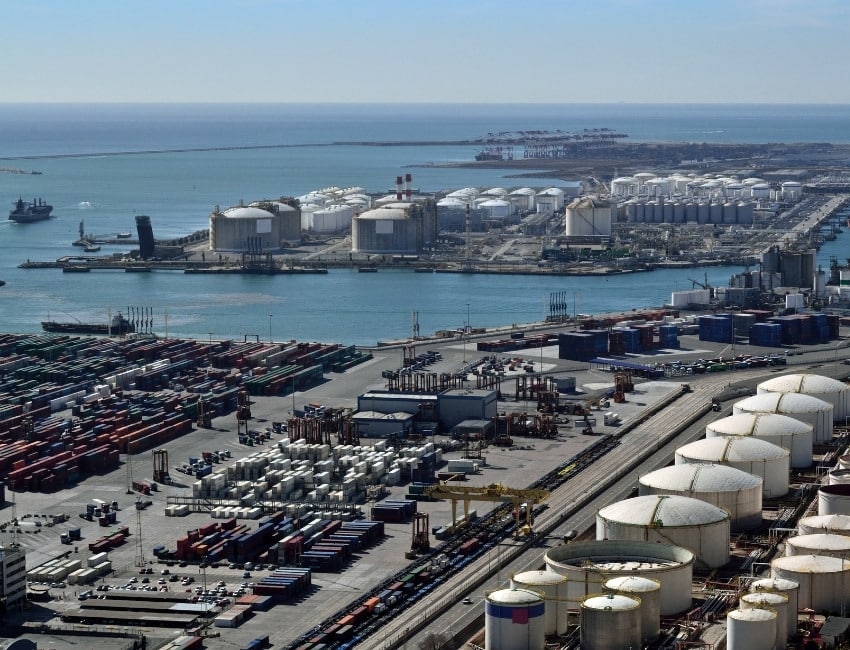
One of the oldest ports of the region, the Puerto de Barcelona is an important shipping hub of Spain. It is situated close to the Port of Tarragona, and is managed by the Barcelona Port Authority (BPA).
It is the 9th largest port in Europe and is comprised of several minor harbours. It shipped 3.42 million TEUs, berthed over 9,000 vessels, and had nearly 4.5 million passengers in 2018.
The main port is divided into the Old Port (Port Vell), the Logistics Port (Barcelona Free Port), and the Commercial Port. Port Vell includes a fishing port, a ferry station, cruise landing area, and yacht harbours.
Next to it are the industrial and freeport zones. The Zona Franca is an industrial park located within the port and is located close to the International Airport (BIA). The port also houses a tourist centre, including an IMAX theatre, multiplex cinema, Europe’s largest aquarium, and a shopping mall. This zone is known as the Maremagnum.
There are 2 harbours located nearby that mainly berth yachts. They are the Port Olimpic, which hosted some events of the Barcelona Summer Olympic Games, and the Port Forum Sant Adria.
The Free Port is easily accessible by both rail and road and is close to the airport and the main ports. The passenger terminals at the port are the Drassanes, Ferry Barcelona, Grimaldi Barcelona, and Port Nou terminals.
4. Port of Bilbao (ESBIO)
Basque Country, Biscay; 35.5 million tons
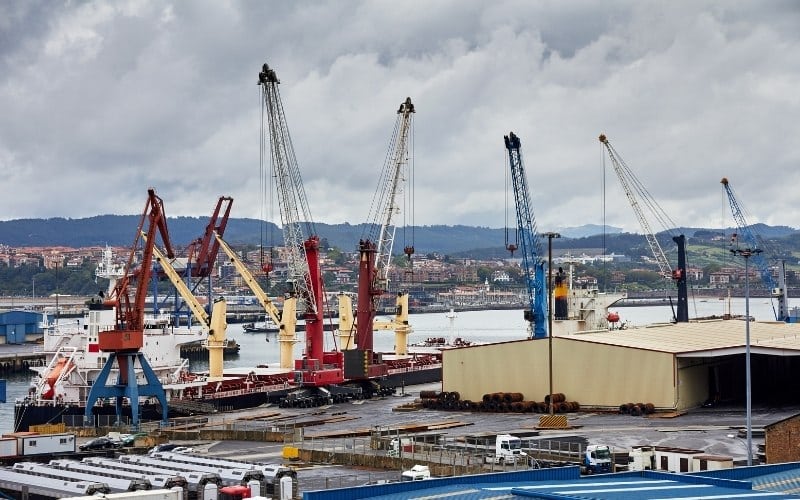
Situated on the Estuary of Bilbao, this port is known as the Exterior Port or the Super Puerto. It spans nearly 17 kilometres of the Bilbao waterfront and has been in use since the early 14th century.
It deals in container, cargo, and passenger traffic in the region. It has an annual container volume of nearly 1 million TEUs and a passenger volume of nearly a quarter-million.
Size-wise, this port is the largest Port of Spain and is well connected by both road and rail. The RENFE rail network links the port at present.
The port deals with cruise ships through the Getxo dock and provides ferry services for Brittany Ferries, Acciona Transmediterranea, and P&O Ferries.
Containers are processed at the ATM and TMB terminals. Liquid cargo such as petroleum and LNG are processed at Petronor and BBG facilities. The port facilities are situated within the municipalities of Santurtzi and Zierbena.
5. Port of Cartagena (ESCAR)
Murcia Region; 34.5 million tons
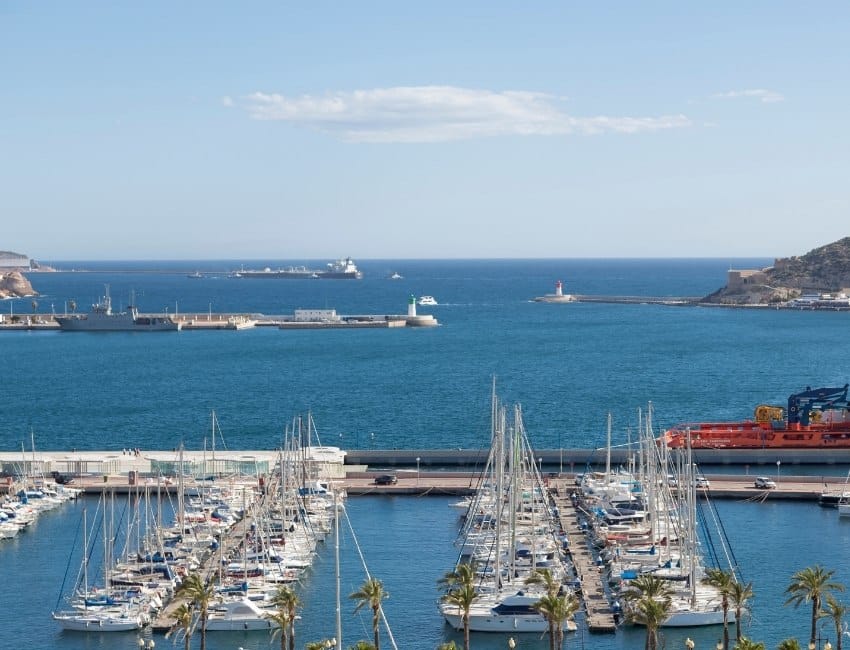
Managed by the Autoridad Porturia de Cartagena, this port is a major shipping hub of the region. It is closely-ranked behind the Port at Bilbao in terms of annual gross cargo tonnage.
It handles over 60 % of exports and 80 % of the imports from the surrounding region and brings in over 40 % of the tourism experienced by the region.
It operates through 3 main zones- El Gorguel, Cartagena, and Escombreras. The main docks of the port are the naval command of the Spanish Armada, the passenger terminal, commercial, cargo, and yacht docks.
In addition, it houses the headquarters of several national and global organizations such as the Maritime Red Cross (Cruz Roja), a search and rescue group (SASEMAR), the Spanish Civil Guard (Guardia Civil), the Customs Surveillance Service (Vigilancia Aduanera), and a division of the Blue Flag (Bandera Azul). It is also an important naval port in Spain.
6. Port of Huelva (ESHUV)
Andalusia; 33.8 million tons
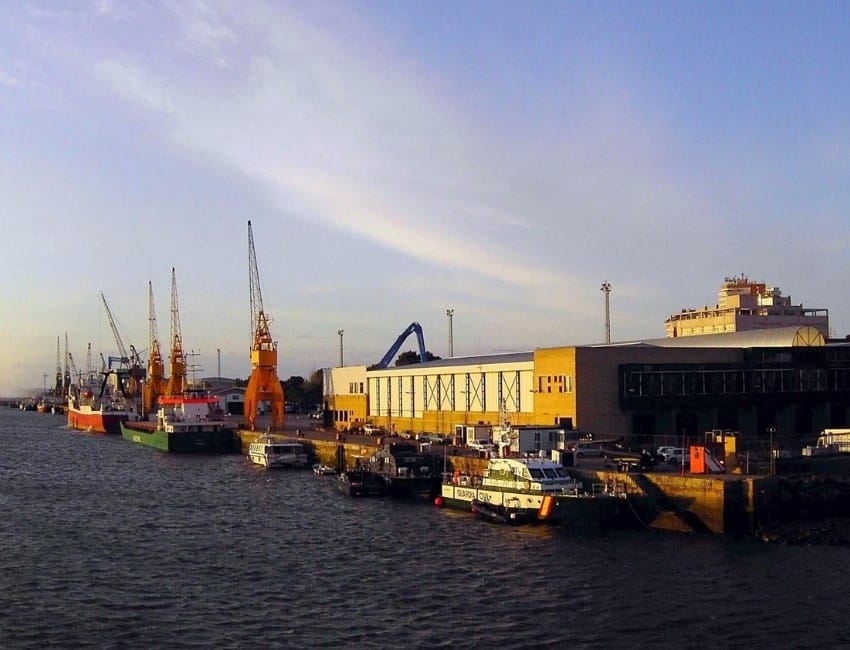
Another major port in the Andalusia region, it lies within Huelva and Palos de la Frontera. It is primarily a cargo and fishing port that processes excess traffic from Port Algeciras.
Operated by the Autoridad Porturia de Huelva, it is situated on the Odiel and Rio Tinto estuary. Silver and other products are a primary export from the port.
The port is built to process container traffic, liquid bulk, solid bulk, and general cargo. In 2018, the port handled nearly 26 million tons of liquid cargo, over 7 million tons of solid cargo, and over 70,000 TEUs.
The port has a special dock for vessels of larger drafts and is known as the Puerto Exterior. The Puerto Interior (or Levante Dock) mainly handles fishing activities.
7. Port of Las Palmas (ESLPA)
Canary Islands; 22.8 million tons
Also known locally as the Puerto de la Luz, Las Palmas is one of the oldest ports in the Canary Islands of Spain. It handles commercial vessels, passenger ships, pleasure crafts, sports boats, and fishing vessels from around the region.
It is an important port on the Mid Atlantic and services a large number of vessels passing through the region. In 2018, the port handled over 1 million TEUs and had passenger traffic of 1.2 million.
One of the largest commodities passing through this port is frozen produce, including fish and foodstuff. The port includes numerous facilities directed at shipping frozen goods such as 175,000 cubic meters storage, reefer specific container depots, preparation rooms for handling frozen goods etc.
The port also boasts of an industrial ice plant that is supplied to frozen good containers. The Border Inspection Post of the EU in the Mid Atlantic is based out of Las Palmas.
Transmediterranea also operates a cruise linking the Canary Islands to Cadiz on the mainland, from this port.
8. Port of Castellon (ESCAS)
Communidad de Valencia; 20.7 million tons
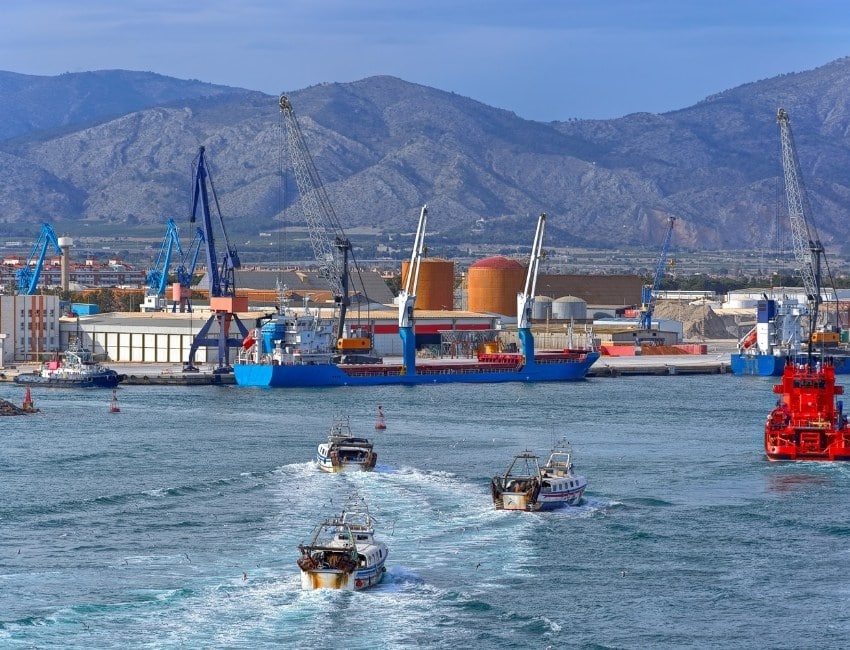
Situated on the Eastern coast of Spain, Castellon is a small multipurpose port. There are 4 zones within the facility that are used to divide inbound traffic.
Darsena Sur to the South, Darsena Norte to the North, Darsena Interior, and Darsena Pesca which is the Fishing Dock. The main imports into the region include minerals, agricultural produce, chemicals, and crude oil. The exports out of Castellon include oil products, fruits, and chemical fertilizers.
The port can handle ships up to 300 m in length, and a maximum draft of 15 meters. Ships that frequent this port include breakbulk carriers, container vessels, passenger crafts, tankers, and ro-ro ships.
There is a shipyard located close to the port, and it can handle minor repairs and operations. The port is connected to the Castellon Airport and the Valencia International Airport. However, the airport at Castellon is now defunct.
9. Port of A Coruña (ESLCG)
Galicia; 13.6 million tons
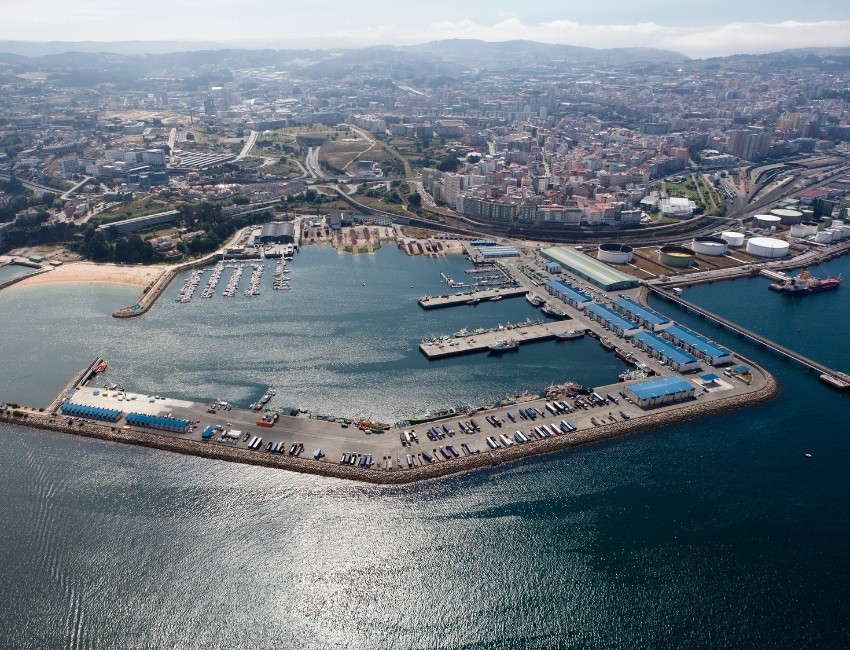
Situated on 7 kilometres of the North-Western Spanish coastline, A Coruna is an important port of the region. It is close to another minor port- Ferrol, but handles a large amount of trade inbound to the region.
Unlike Ferrol, the port is located in a natural harbour that is protected artificially. It is well connected with rail and road facilities leading to the main city. There is a transatlantic dock located near the main harbour, and the site is frequented by tourists.
The port is built on 1.15 square kilometres of area and has services for commercial vessels, fishing basins, and general cargo vessels. The Marina and Antedarsena basins are also nearby.
Much like Ferrol, there are a few forts that dot the port region, as it was in use as a base for the Spanish Armada. The existing naval facilities have been concentrated at Ferrol to designate A Coruna as a civilian port.
10. Port of Ferrol (ESFRO)
Galicia; 11.1 million tons
Located on the Atlantic Ocean coast, the Puerto del Ferrol is a small port on the Spanish North West coast. It is connected by rail from the Ferrol Station and by air via the La Coruna Airport.
A container terminal was made operational in 2017 at the Exterior Port. Extensive expansion activities were also pursued after 2015. This is aimed at building 1.5 km of docks, 20 m increased depth, improved connectivity, and added port capacity.
The port is also a hub for the Spanish Armada, and there are several bases in the region. Forts line the entry to the port, and the major shipbuilding yards of Spanish defence group Navantia are located nearby.
Ferrol has also hosted NATO maritime exercises on behalf of the Spanish Squadron. Minor fishing activities are carried out at small facilities within the port. This is at present another important naval port in Spain.
11. Port of Santander (ESSDR)
Cantabria; 6.6 million tons
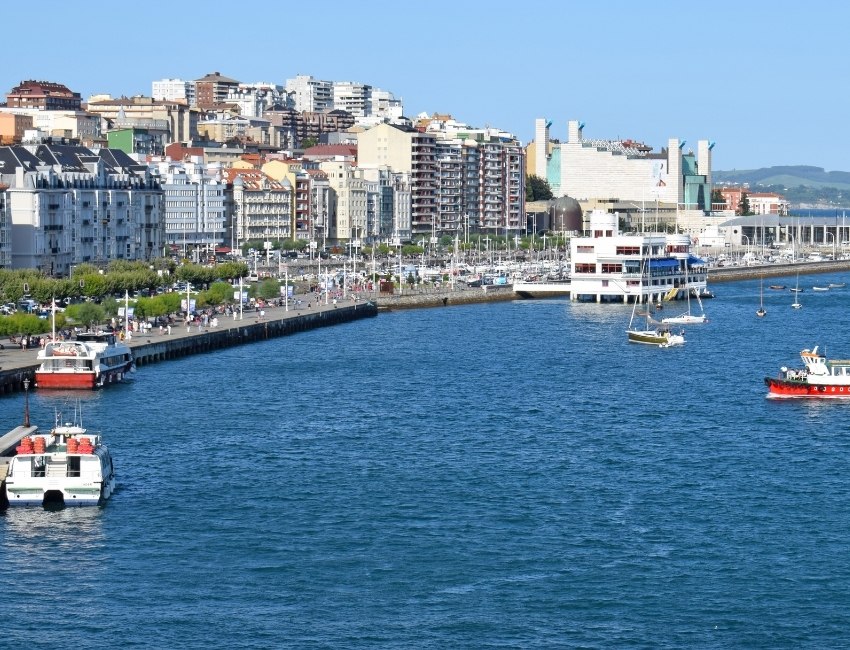
As the capital of the autonomous Cantabria province, Santander is an important port city in North Spain. It is close to the port of Bilbao, and is located in a region famed for trade.
Cruise ships at this port bring in a significant amount of tourism into the country. Ferry services also frequently ply from the local harbor.
These include services from Portsmouth and Plymouth in the UK, Cork in Ireland, and other coastal cities in Spain. The foreign ferries are solely operated by Brittany Ferries as of 2018.
The port is well connected with the Santander station situated nearby. Moreover, the Banco Santander which is the largest bank in Spain has its headquarters in the city, so this brings in passengers from around the world.
The port harbor is built to accommodate ships over 500 feet in length and is of a natural type. The port can also carry out repairs and other services through the local dry dock. The operating maritime authority of the region is the Autoridad Porturia de Santander.
12. Port of Vigo (ESVGO)
Galicia; 4.2 million tons
The Port of Vigo is the largest fishing port in the world and is the headquarters of Pescanova which is the leading global multinational fishing company. It is a hub for fish and exports the produce to countries in Africa, South America, Europe, Australia, and Spain.
The port also hosts international conventions on fish and its products and advances in this industry. For this reason, it is an integral port in Spain that plays a role in tourism and exports.
The port is divided into several docks and zones. Bouzas zone handles ro-ro traffic and shipyard repairs. Beiramar and O Berbes handle fishing vessels. O Areal deals with commercial and liquid goods. The Guixar zone handles containers. Additionally, there is a marina dock for pleasure crafts and a transatlantic dock.
13. Port of Malaga (ESAGV)
Andalusia; 3.5 million tons
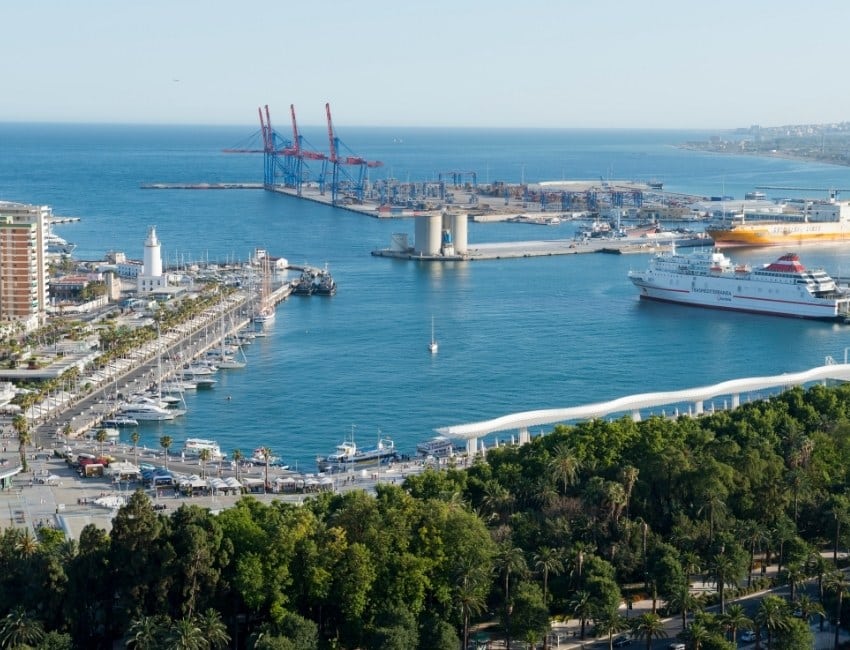
Lying on the Costa del Sol in the South of Spain, it is the oldest port of the country. It is known for cruise ships, container traffic, breakbulk carriers, and vehicle carriers. There is also a fishing fleet based out of this port.
The port was founded in 1000 BC, and was an important hub for shipment to Africa and other countries to the South. A comprehensive reconstruction was undertaken in the early 20th century.
The Malaga-Puertollano pipeline exported oil through the port till 1990, after which the area was converted into a residential facility. It has faced competition from the Port of Rotterdam and the Algeciras Bay Port. There are currently 10 wharves operational; some of which are reserved for Ro-Ro carriers.
The port is connected by road and rail and handles a significant amount of imports. The annual container traffic is around 0.5 million TEU while passenger traffic is 0.2 million. There is extensive planning currently underway to transform the Port of Malaga into an advanced facility.
14. Port of Seville (ESSVQ)
Andalusia; Recent data unavailable
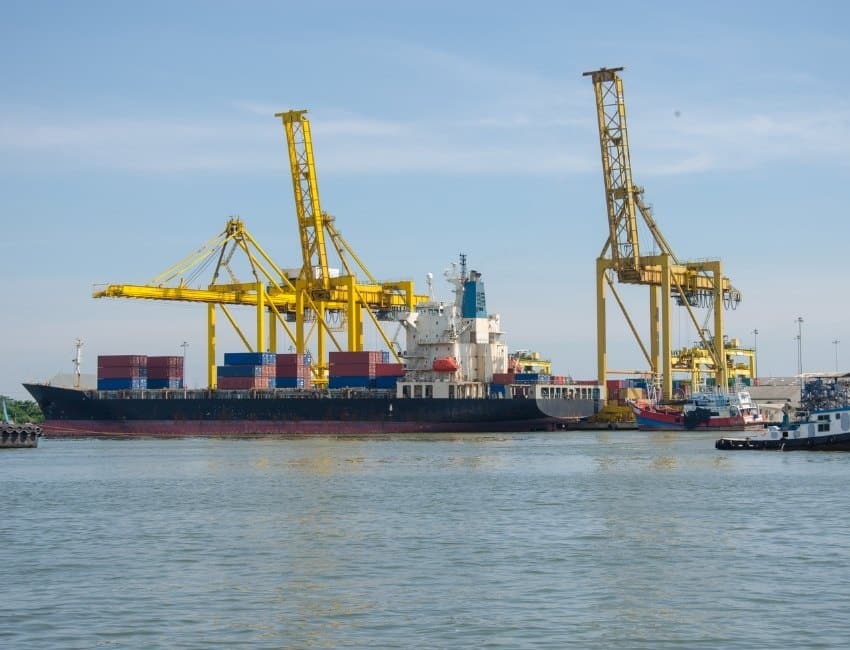
Located on the Guadalquivir, this port is the only commercial river port in Spain. Managed by the Autoridad Porturia de Seville, it has been in use from the Early Modern Period. It is a minor port but is historically significant to the region.
The port operates a cruise ship dock known as the Muelle de las Delicias and a bulk cargo dock called the Tablada Dock. 2 docks at Darsea del Batan, namely Centenario and Batan Norte, mainly handle liquid cargo, container traffic, and ro-ro vessels.
The port also operates a shipyard South of the main facility. No data regarding the annual gross tonnage is available from recent times.
15. Port of Ibiza (ESIBZ)
Balearic Islands; Recent data unavailable
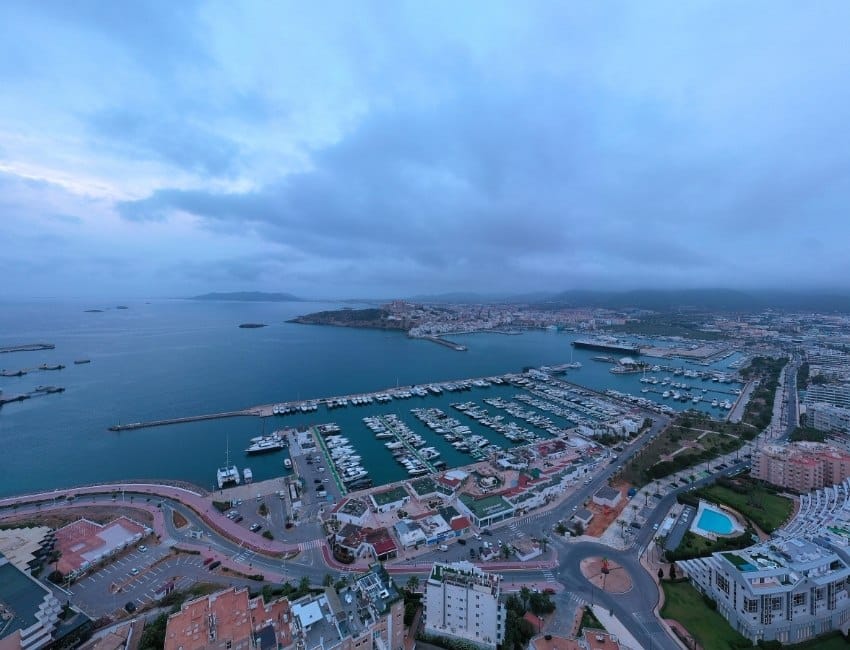
Part of the Balearic Islands that dot the Eastern coast of Spain, Ibiza is a popular tourist and travel destination. One of the largest income sources of the region, cruise ships and liners can be found at this port almost throughout the year.
The port mainly supports tourism, pleasure crafts, and other passenger vessels. There is also a commercial harbour in the port to service incoming cargo vessels.
The Port of Ibiza uses separate quays for commercial and passenger vessels. The Botofac breakwater is also used for servicing and discharging liquid cargo ships.
Some cruise liners dock at this breakwater. There are also several docks reserved for pleasure crafts and other recreational purposes.
The port is touted as one of the most festive facilities around the world and has contributed significantly to Ibiza’s tourism. Despite having equipment to service cargo vessels, this is minor, and there is no recent data for gross annual tonnage.
Special Mention
Port of Santa Cruz de Tenerife (ESTCI)
Tenerife – Canary Islands; Recent data unavailable
As the major passenger port of the Canary Islands, Tenerife deals with over 20% of the regional passenger transit. It mainly handles ferry services, cruise liners, and pleasure crafts that ply across Europe, Northern Africa, and the Americas. It ranks 2nd behind the Port of Barcelona in terms of passenger transit in Spain, averaging 2-3 million individuals annually. There are dedicated harbours and marinas that line the main port quay.
The port includes a Border Inspection Post (BIP) and Customs Patrol to counter illegal entry into the European Union. It has advanced technology to process passengers at a quick rate. While it is not part of the TEN-T Trans European network, an expansion effort is being made to improve the port’s cargo handling facilities.
At present, it can only process limited-sized container and cargo vessels and has a moderate port holding capacity. However, its position as a major passenger port in Spain makes it a must-have on our list.
Related reading:
- 10 Major Ports in the Republic of Yemen
- 10 Major Ports In The Dominican Republic
- Major Container Ports And Port Operators in the World In 2020
- 11 Major Container Terminal Operators In The World
- Top 10 Biggest Ports in the World in 2019
Disclaimer: The authors’ views expressed in this article do not necessarily reflect the views of Marine Insight. Data and charts, if used, in the article have been sourced from available information and have not been authenticated by any statutory authority. The author and Marine Insight do not claim it to be accurate nor accept any responsibility for the same. The views constitute only the opinions and do not constitute any guidelines or recommendation on any course of action to be followed by the reader.
The article or images cannot be reproduced, copied, shared or used in any form without the permission of the author and Marine Insight.
Do you have info to share with us ? Suggest a correction

About Author
Ajay Menon is a graduate of the Indian Institute of Technology, Kharagpur, with an integrated major in Ocean Engineering and Naval Architecture. Besides writing, he balances chess and works out tunes on his keyboard during his free time.
Latest Maritime Knowledge Articles You Would Like:
Subscribe To Our Newsletters
By subscribing, you agree to our Privacy Policy and may receive occasional deal communications; you can unsubscribe anytime.















